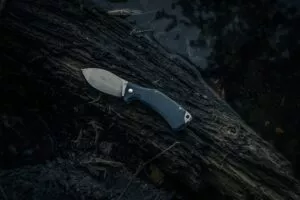
How to Make Your Tent Last Longer
A tent is often the most expensive piece of camping gear people own. Whether you own high-tech light-weight shelter or a hulking 8-person tent, your camping tent is an investment, and one you want to get its full lifespan from. Most tent manufacturers predict you can get between 5 or 10 years of use out of a tent. However, with careful use and maintenance with your tent, you can easily meet or surpass the high-end of this lifespan.
We compiled our top tips for improving your tent’s lifespan, from things you can do before you head out camping, to those best practices you should do when setting up your site or laying down at night.
The most common forms of tent failure
Pole failure:
Poles are the skeleton of the tent, integral to the structural integrity. Damaged poles can lead to total tent failure or further damage to other components of the tent. Keeping your tent poles in good working order is one of the easiest ways to ensure your tent lasts as long as possible. However, the tension your tent poles are put under whenever the tent is set up proves to cause quicker wear and tear to the poles if you are not careful.
Often, most damage to the poles is happens either while the tent poles are in storage, or while the tent is being set up. When storing tent poles, many tent manufacturers and bloggers recommend storing the tent pole partially assembled to reduce extended tension applied to the shock cord inside. This respect to the shock cord is important to consider when taking down a tent as well – start folding the poles at the middle and try to fold the poles as evenly as possible.
Treat your poles well when setting up, avoiding the segments from knocking into each other or hitting the ground. Before starting to thread tent poles through, make sure each segment if firmly connected. Do not overstress the poles by bending them too much to fit them into the tent, as this can cause the poles to become bent out of shape. We also recommend cleaning your poles occasionally, especially after camping somewhere dusty.
Rips/Tears
Like when my pup’s claws went through the screen door last summer, rips and tears can be a common occurrence when camping. While some rips and tears will not be a big deal, others can render a tent useless.
In case of a ripped tent, patching the tent is highly recommended. Luckily, in the case of the eight-person tent door my dog clumsily attacked, the hole never ripped further, and we were able to get a repair kit to seal the hole.
Zipper failure
A broken zipper on a tent can prove disastrous. A tent door that cannot close is not a door, it’s just a portal for mosquitos to enter through.
Usually, zipper failure happens due to a jam of the zipper, whether this be from the tent fabric, dirt and debris, or damage to the actual zipper.
For zipper repair information, check out this guide from MEC.
Best practices
Check the state of your gear before any camping trip
Before you go camping, it is imperative to check out the state of the gear you will be bringing. Being on trail or at the camp site is too late to realize a pole is broken or a hole needs mending. Before any multi-day camping trip, I will set up my tent to ensure everything is in working order, and if I’m only camping for one night I will at least check each component for tears or cracks.
Be gentle with your tent
How you treat your tent has a big impact on it’s longevity. Treat your poles gently, pull the zippers with minimal force, clean debris from out of your tent while tearing down, and taking extra care when packing and unpacking your tent components alone can really ensure your tent will last longer.
Choose your campground carefully
Most tents have what is called a “Bath-tub bottom,” where the lowest part of the inner tent come up a few centimeters off the ground to prevent leaking into the inside of the tent. This part of the tent is rugged and has lots of waterproofing, but not impervious to damage, and if it does fail, can mean a real wet time for campers inside. We recommend two things to extend the lifespan of the bottom of your tent.
- One, use the groundsheet or footprint included with your tent, or a tarp if it doesn’t include one, to prevent water entering the tent from the bottom and protect from sharp twigs or stones that can puncture the bottom.
- Similarly, pick a spot that is either a designated campsite with defined campground or clear the campground from these debris that can damage tents and make your sleep uncomfortable.
Take down
Before taking down your tent, brush out and debris from inside the tent and shake off any debris that might have stuck to the bottom of your tent. Packing your tent up with rocks and twigs stuck to it can cause abrasion and damage to the tents components. Also, a given to make sure this is less of a problem and to keep your tent cleaner is to leave the shoes off while you are inside the tent.
Store it outside of the stuff sack
This seems unintuitive, but when storing your tent for long periods of time like at the end of the season, you should not leave it in the stuff sack. Even though it will take up less space and you can keep all of the components together, storing your tent inside of the bag can actually degrade your tent. The friction and creases created when stuffed into a stuff sack is counter-intuitive to the long term quality of your tent.
Store your tent in a loose mesh bag, a pillowcase, or lightly folded up in your closet when not in use. Use the included stuff sack only when travelling, if you need to. I have had great luck reducing pack weight and improving the packability of my backpacking bag by packing my tent directly into the bag.
Never store your tent while it is wet.
The absolute first thing everyone should be doing after a trip or outing is making sure that your tent is completely dry before it goes into storage. Even on a clear night with nice conditions outside, the moisture that will accumulate on your tent after camping is enough to cause mold and mildew onto your tent if you put the tent into storage afterwards. Not only can mold and mildew be unsafe and unpleasant in close contact, but they can damage your tent including its Polyurethane waterproof coating, causing even further issues if you end up with a tent that has been stored while wet.
Our advice after any camping trip is when you are home, air out your gear, including the fly and tent body. Under sunny conditions, airdrying outside should quickly do the trick, but if the weather is cloudy or wet, then leaving your tent overnight should be enough. Since the majority of tents these days are made from lightweight synthetic fabric, these tents do not take long to dry.
Fixing tent holes: A guide
So, a stick snagged your tent, or your tent snagged your dog, and now you have a hole in the tent fabric. Luckily, there’s lots of options that can help you repair a tent that has sprung a leak, including professional repairs or using a warranty you might have from when you bought your tent. In the following sections, we will briefly discuss how to repair a tent using easily purchased products you can find at a camping store.
First, you will need a few things: A tent-repair tape or mesh patch to repair the tent with it, scissors, and products to clean the tent like soap and water, or rubbing alcohol, with a rag.
Clean the area around the tear with rubbing alcohol or some other means. Loose dirt and debris can prevent the repair from taking hold.
Once the fabric has dried from cleaning, prepare the other components. Cut a piece of repair tape, large enough to cover the hole with some tape covering around an inch around the surrounding area. Apply the tape against a solid surface so the seal firmly seals. Use an interior patch if needed, like for high-tension areas, you should add a patch on the other side to ensure long-term durability. After applied, the tape should cure for a day before the tent being packed up.
If you have to apply a patch to a hole in the tent’s mesh panels, you will need to use a mesh patch instead of repair tape. Otherwise, the process is fairly similar.
Rejuvenating your waterproofing: A guide
When the waterproofing wears off your tent, you might not notice until a leak springs in the middle of the night. Luckily, this is not a difficult fix, and you can seal a leak when it happens decently effectively.
There is many things that go into waterproofing a tent, starting with the tent material and design, and ending with sealers and coatings. While a waterproof layer on the outside of the fly will be included on every tent, sometimes waterproofing is added to other points where water may be able to get in, like along seams or zipper openings.
There are two main kinds of waterproofing that your tent will have. The first one of note is DWR, a protective coating that is applied to your rainfly and outward facing materials, that helps shed water off it. On some tents, there is also an urethane coating on the floor of your tent or inside the rainfly, and sealants designed to keep the seam from leaking.
Replacing the DWR
If you are unsure about how the waterproofing of your tent is holding up, there’s a really easy way to check. To test the state of your waterproofing, check for beading on the tent when water is applied, using a spray bottle on the assembled tent. If it beads off the tent material, then you should be good! But if the water absorbs into the tent fabric, then it looks like you will need to replace this layer.
To waterproof a tent, the first step we advise you to take is to wash the tent. Set up your tent on a nice day outside and scrub with a cloth and soapy water. Debris and dust can prevent waterproofing being fully effective.
Here are some steps to replace the durable water repellent coating on your tent.
First, clean the tent. Set up the tent and spray down the rainfly with clean water. Don’t worry about letting the tent dry yet, most DWR products advise you to not worry about it. Apply the waterproof spray evenly over the exterior of the rainfly. After a couple minutes, take your damp cloth and wipe off any excess coating. Then let the tent dry completely before packing it away.
Replacing the Urethane Coating on your tent
Urethane is used on the inside of your rainfly, as well as on the floor of the tent, providing strong waterproofing where it might need it most. It can be easy to identify when you need to reapply urethane, as you will seeing flaking sourced at the urethane coating.
Get a tent sealant that is meant for the type of tent you have. Different tent materials require different types of sealant. Find out what material your tent is made out of using any product information included or the internet and buy an appropriate tent sealant.
When replacing this urethane coating, it is recommended that you first you want to remove any flaking coating, scrubbing it out with rubbing alcohol and a sponge or a light cloth. Apply a thick coating to the entire fly or tent floor according to the directions for the sealant. Then just let the sealant dry 24 hrs before storing your tent.
Sealing leaky tent seams
The seams of your tent can be a common point of leaking, especially if the sealant wears off. If one of your seams is introducing water to your tent, you can fix this in a similar method to these other tent fixes.
Ideally, when you go to fix the seams, you should do so on a sunny day outside or do it inside in a bright room. A direct source of light will let you quickly find any large holes that water can enter through.
Flip the tent to expose the underneath of the of the fly, or the inside of the tent body. Remove any peeling seal tape but leave any intact seal tape.
Prep the seams, gently cleaning them if needed, then apply your seam sealer product to the affected seams. However, it might be worth it to extent past the affected area, since the damage to the seams might indicate future problems with the seams of your tent.
Frequently asked questions
How to wash a tent?
Washing a tent can be necessary after a camping trip, or before you repair a tent. However, washing a tent requires specific care. While a new tent can be spot cleaned or wiped down with soapy water, occasionally it is worthwhile cleaning the tent completely.
The process of deep cleaning a tent requires some precursory shopping. Buy a natural soap – like Dr. Bronner’s Castile Liquid Soap, or a tech wash, a type of product designed to clean technical synthetics that have a DWR like Nathan® Sport Wash or GearAid Revivex.
First, shake out the debris that the tent may have accumulated. Then you may want to then spot clean the tent, removing any areas where dirt or grime has particularly accumulated.
Then, in either your bathtub or a deep sink, add the soap or cleaner you purchased, and add it to water that is lukewarm or cooler. Unzip the ten doors and submerge the tent and rainfly into the water. Agitate the water by hand, turning out corners and pockets to clean the tent thoroughly. Then soak the tent according to the instructions of the cleaning product you bought.
Afterwards, look at the water. If the water itself is dirty, restart the process. Otherwise, rinse the tent and fly out, and carefully hang the clean tent on a drying rack or on your shower rod. Never twist dry a tent.
How to dry a tent quickly?
Airing the tent out in the sun, either on a laundry line, or while set-up, will dry it quickest. Otherwise, dry it out inside. Using a floor fan directed at the tent will increase the rate that the water on the tent will evaporate.
How long should a tent last?
How long a tent lasts depends on the tent itself, how well it is treated, and where it has traveled. You can easily see a tent last between 5-10 years if you treat it well and don’t excessively use it. If you only go out a couple of weekends per year and follow the advice in this guide, you should easily reach the longer lasting side of this lifespan.
However, these numbers do change when we consider how broad the spectrum of tent quality is. A very cheap tent can fail quickly if you are not careful – I’ve witnessed day-one tent failures happen to extremely cheap Walmart tents. On the other hand, high quality premium tents like Hillenberg’s can easily last a quarter-century or longer.
How long do tents stay waterproof? How often should you waterproof your tent?
The DWR and Urethane coatings can wash off, but the rate that this happens is uneven and depends on your camping solutions.
Some sources state that replacing the waterproof layer should be rejuvenated every two years, while others suggest you should test the waterproofness of the tent before outings to ensure the coating is still active.
I personally would check the degree of waterproofness of your tent and rainfly before the first trip of the season. Then, throughout the season, I would be mindful of how well the tent is shedding water, and only take steps if the tent and fly are demonstrably struggling to shed water from their surfaces.
Read more

The Best Camping Tents in Canada
Camping is one of the best ways to get into nature, but without the perfect tent – your trip can go downhill fast.

The Best Hiking Boots and Trail Shoes in Canada
Boots and shoes are perhaps the most important piece of gear for any hiker.

The Best Headlamps and Lanterns for Summer
Visibility is important when the sky turns dark. These headlamps and lanterns will illuminate your summer.

The Best Pocket Knives in Canada
A quality pocketknife can be one of the handiest tools in many situations.